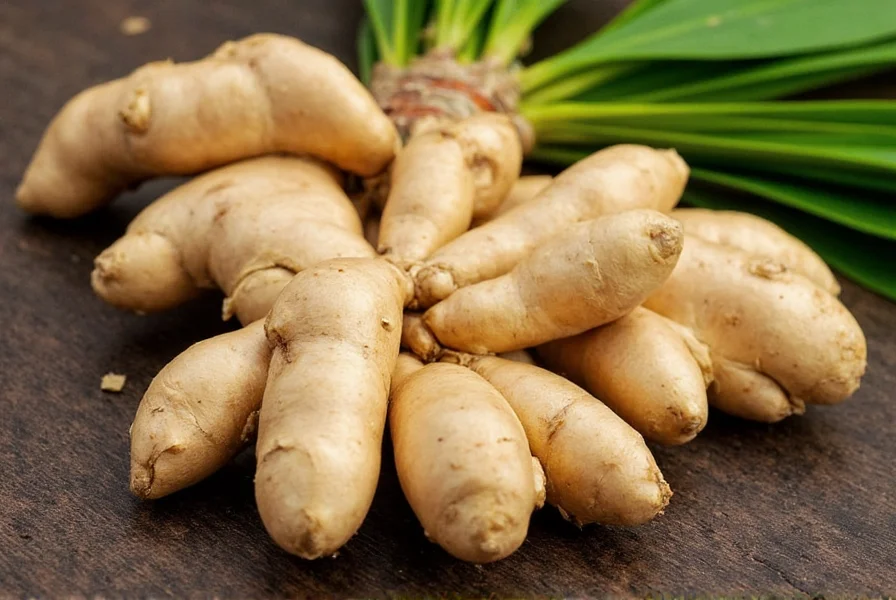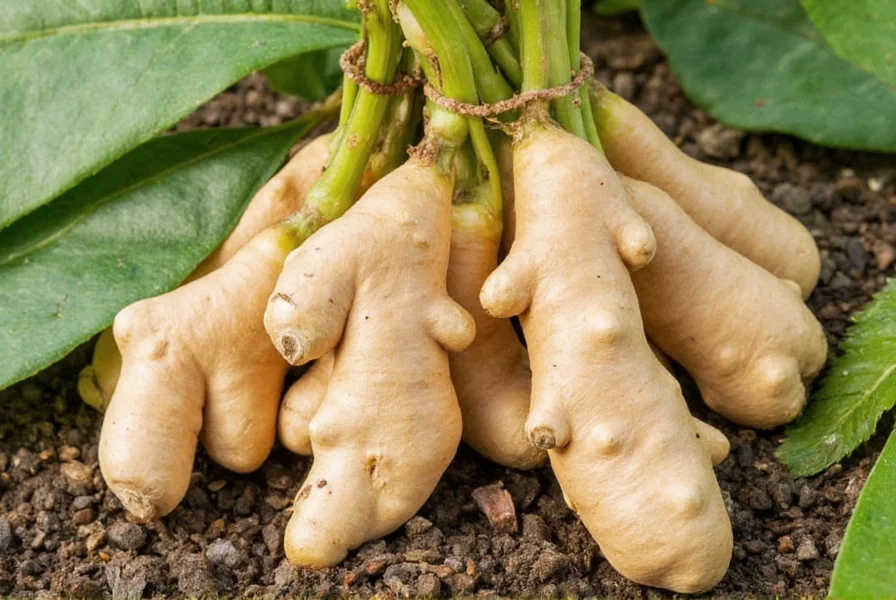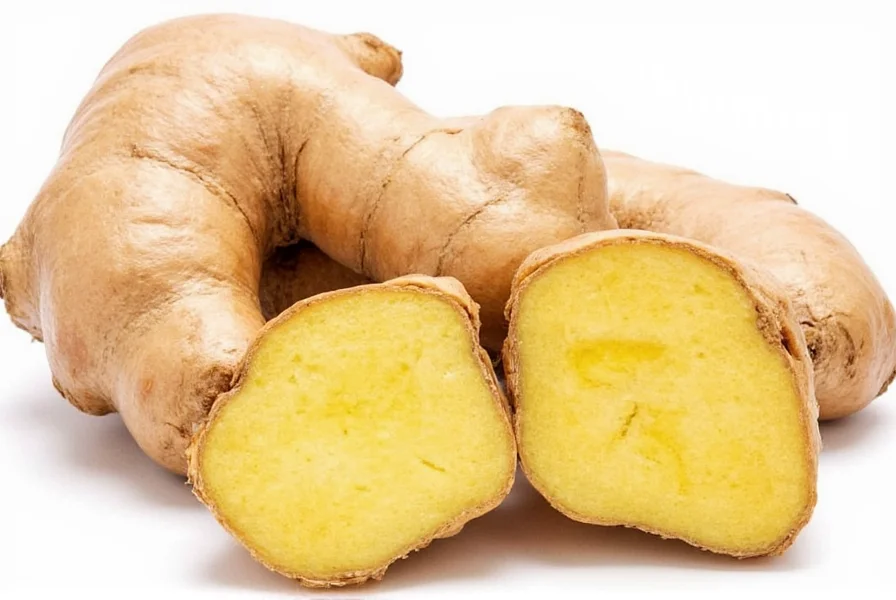Growing your own ginger at home offers numerous benefits, from ensuring chemical-free produce to enjoying the satisfaction of cultivating this versatile spice. Whether you're an experienced gardener or a beginner, understanding the proper techniques for planting ginger roots can lead to a bountiful harvest of fresh, aromatic ginger.
Understanding Ginger's Growth Requirements
Ginger (Zingiber officinale) is a tropical perennial plant that grows from rhizomes rather than true roots. Unlike many garden plants, ginger thrives in warm, humid conditions with filtered sunlight. The plant's underground rhizomes develop horizontally in the soil, producing the familiar ginger 'roots' we harvest.
Selecting Quality Ginger Rhizomes for Planting
The foundation of successful ginger cultivation begins with selecting high-quality rhizomes. When choosing ginger roots for planting:
- Look for plump, firm rhizomes with smooth skin and visible growth buds (eyes)
- Avoid shriveled, moldy, or overly dry specimens
- Organic ginger is preferable as conventional grocery store ginger may be treated with growth inhibitors
- Each planting section should contain 1-2 healthy eyes and measure 1-2 inches in length
| Variety | Flavor Profile | Growing Season | Best For |
|---|---|---|---|
| Common Yellow Ginger | Sharp, pungent | 8-10 months | Cooking, medicinal uses |
| African Ginger | Milder, citrus notes | 7-9 months | Teas, fresh consumption |
| Blue Hawaiian | Sweet, floral | 9-11 months | Candying, specialty dishes |
Optimal Timing for Planting Ginger
The best time to plant ginger roots depends on your climate zone. In tropical regions, ginger can be planted year-round, but spring offers ideal conditions in most temperate climates. For successful ginger cultivation:
- Plant ginger 2-4 weeks after your last frost date when soil temperatures reach at least 68°F (20°C)
- In containers, you can start ginger indoors 4-6 weeks before the last frost
- Avoid planting during extreme heat or cold periods
- For continuous harvest, plant new rhizomes every 4-6 weeks during the growing season
Preparing Ginger Rhizomes Before Planting
Proper preparation of ginger rhizomes significantly increases your success rate. Follow these steps for optimal results when preparing ginger roots for planting:
- Soak the rhizomes in lukewarm water for 1-2 hours to rehydrate them
- Cut larger rhizomes into sections, ensuring each piece has 1-2 healthy eyes
- Allow cut surfaces to dry and form a callus for 12-24 hours before planting
- Optionally, dust cut ends with powdered sulfur or cinnamon to prevent rot
Soil Requirements and Preparation
Ginger thrives in specific soil conditions that mimic its natural tropical habitat. The best soil for ginger cultivation should:
- Have excellent drainage while retaining consistent moisture
- Maintain a slightly acidic pH between 5.5 and 6.5
- Be rich in organic matter (incorporate 2-3 inches of compost)
- Be loose and friable to allow rhizomes to spread horizontally
For garden beds, amend native soil with equal parts compost, peat moss, and perlite. In containers, use a high-quality potting mix specifically formulated for tropical plants. Raised beds work exceptionally well for ginger cultivation as they provide superior drainage.
Step-by-Step Planting Process
Follow these detailed steps for planting ginger roots successfully:
- Prepare planting area with appropriate soil mix as described above
- Create shallow trenches 2-4 inches deep, spacing them 8-12 inches apart
- Position ginger rhizomes with eyes facing upward in the trenches
- Cover with 1-2 inches of soil, gently firming the surface
- Water thoroughly until soil is evenly moist but not saturated
- Apply 1-2 inches of organic mulch to retain moisture and regulate temperature
- Mark planting locations as ginger sprouts may take 2-4 weeks to emerge

Watering and Care Requirements
Proper moisture management is critical for successful ginger cultivation. Ginger requires consistent moisture but cannot tolerate waterlogged conditions. Follow these watering guidelines:
- Water when the top inch of soil feels dry to the touch
- Maintain even soil moisture without saturation
- Increase watering frequency during hot, dry periods
- Reduce watering as harvest approaches (last 4-6 weeks)
- Mist foliage regularly to increase humidity, especially in dry climates
Fertilize ginger every 4-6 weeks with a balanced, organic fertilizer. A 10-10-10 or similar formula works well, or use compost tea for a more natural approach. Avoid high-nitrogen fertilizers which promote leaf growth at the expense of rhizome development.
Common Growing Problems and Solutions
Even with proper care, ginger growers may encounter certain challenges. Here are solutions to common problems when planting ginger roots:
- Rotting rhizomes: Usually caused by overwatering or poor drainage. Reduce watering frequency and improve soil drainage.
- Yellowing leaves: May indicate nutrient deficiency or excessive sun exposure. Adjust fertilization and provide more shade.
- No sprouting: Ginger may take 3-4 weeks to emerge. Ensure proper temperature (minimum 68°F/20°C) and consistent moisture.
- Pests: Watch for aphids and spider mites. Treat with insecticidal soap or neem oil solution.
- Stunted growth: Often due to insufficient nutrients or crowded planting. Apply balanced fertilizer and ensure adequate spacing.
Harvesting Your Homegrown Ginger
Ginger typically reaches maturity 8-10 months after planting, but you can begin harvesting 'green ginger' as early as 4-6 months. For full-sized rhizomes:
- Look for yellowing foliage and reduced growth as harvest indicators
- Cut back watering 1-2 weeks before harvest to dry the soil slightly
- Carefully dig around the plant perimeter to avoid damaging rhizomes
- Lift the entire plant, then separate rhizomes from roots and stems
- Cure harvested ginger in a warm, dry location for 2-3 days before storage

Storing Your Ginger Harvest
Proper storage extends the shelf life of your homegrown ginger. Follow these storage recommendations:
- Store unpeeled ginger in a paper bag in the refrigerator crisper drawer for 2-3 weeks
- For longer storage, freeze ginger (whole or sliced) for up to 6 months
- Dry ginger by slicing thinly and dehydrating at 135°F (57°C) for 8-12 hours
- Pickling preserves ginger while enhancing its flavor profile
- Store dried ginger in airtight containers away from light and moisture
Troubleshooting Common Ginger Growing Questions
Many gardeners wonder about specific aspects of planting ginger roots. Here are answers to frequently asked questions:
- Can you grow ginger indoors year-round? Yes, with adequate light (grow lights help) and humidity.
- How deep do ginger roots grow? Rhizomes typically develop in the top 6-8 inches of soil.
- Why are my ginger leaves turning yellow? Often due to overwatering or nutrient deficiency.
- Can you plant grocery store ginger? Possible, but organic is better as conventional ginger may be treated with growth inhibitors.
- How much ginger will one plant produce? A single rhizome typically yields 0.5-1 pound of harvestable ginger.
Frequently Asked Questions
When is the best time to plant ginger roots?
The optimal time to plant ginger roots is 2-4 weeks after your last frost date when soil temperatures reach at least 68°F (20°C). In tropical climates, ginger can be planted year-round, but spring planting generally yields the best results in most regions. For container gardening, you can start ginger indoors 4-6 weeks before the last frost date.
How deep should I plant ginger rhizomes?
Plant ginger rhizomes 2-4 inches deep in the soil, with the growth buds (eyes) facing upward. In heavier soils, plant slightly shallower (2 inches), while in lighter, sandy soils, you can plant slightly deeper (up to 4 inches). Always cover the rhizomes with 1-2 inches of soil after placement, and maintain this depth as the plant grows by adding soil if necessary.
Can I grow ginger in containers?
Yes, ginger grows exceptionally well in containers, which actually helps control its spread. Use a container at least 12 inches deep with excellent drainage. A 5-gallon pot can accommodate 3-5 ginger rhizomes. Container-grown ginger requires more frequent watering and benefits from regular feeding with balanced fertilizer. Move containers to partial shade during hot summer months and bring indoors before temperatures drop below 50°F (10°C).
How long does it take for ginger to grow from planting to harvest?
Ginger typically requires 8-10 months to reach full maturity from planting to harvest. However, you can begin harvesting 'green ginger' as early as 4-6 months after planting for a milder flavor. For the most robust flavor and maximum rhizome size, wait the full 8-10 months. The plant will show harvest readiness when the leaves turn yellow and begin to die back naturally.
What are the ideal growing conditions for ginger?
Ginger thrives in warm, humid conditions with temperatures between 71-77°F (22-25°C). It prefers partial shade (25-50% sunlight) and high humidity levels (70-80%). The soil should be well-draining yet moisture-retentive, rich in organic matter, and slightly acidic (pH 5.5-6.5). Consistent moisture is crucial, but the soil should never be waterlogged. In cooler climates, growing ginger in containers that can be moved indoors during cold periods yields the best results.











 浙公网安备
33010002000092号
浙公网安备
33010002000092号 浙B2-20120091-4
浙B2-20120091-4